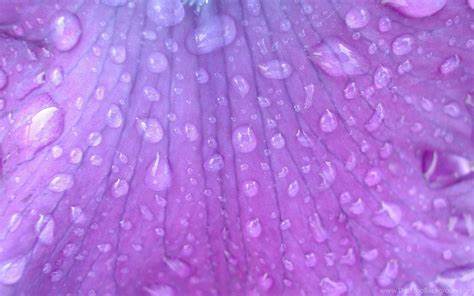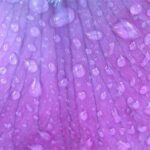(colour:cckmvfcmc3m= lavender) Lavender, with its delicate hue and calming presence, has captivated humans for centuries. This article explores the myriad aspects of lavender, delving into its history, cultural significance, uses, and the psychological impact of its color. Through 25 detailed paragraphs, we will uncover the charm and versatility of this beloved color.
The History of Lavender
(colour:cckmvfcmc3m= lavender) Lavender’s history dates back to ancient civilizations. The Egyptians used lavender in their mummification processes, appreciating its pleasant fragrance and preserving qualities. The Romans, known for their love of baths, added lavender to their bathing rituals, enjoying its soothing properties. Over the centuries, lavender has maintained its status as a valued plant and color, woven into the fabric of human culture.
Lavender in Art and Literature
(colour:cckmvfcmc3m= lavender) Lavender has long been a favorite among artists and writers. Its soft, muted hue evokes a sense of tranquility and nostalgia. In paintings, lavender fields often symbolize peace and beauty. Literature, too, is replete with references to lavender, from Shakespeare’s “Winter’s Tale” to modern poetry, where it is used to evoke a sense of calm and timelessness.
The Science of Lavender
(colour:cckmvfcmc3m= lavender) Lavender, scientifically known as Lavandula, belongs to the mint family. The color lavender is a light purple with a bluish tinge, created by combining blue and red in specific proportions. The exact shade can vary, ranging from pale lavender to deep lavender, each carrying its unique charm and aesthetic appeal.
Psychological Impact of Lavender
(colour:cckmvfcmc3m= lavender) Colors have a profound impact on human psychology, and lavender is no exception. This color is often associated with calmness, relaxation, and serenity. It is known to reduce stress and anxiety, making it a popular choice in interior design and wellness spaces. The color lavender can create a soothing atmosphere, promoting mental well-being and peace.
Lavender in Fashion
(colour:cckmvfcmc3m= lavender) Lavender has made its mark in the fashion industry as well. This versatile color is used in various clothing items, from elegant evening gowns to casual summer dresses. Lavender’s soft hue complements many skin tones and can be paired with a range of other colors, making it a favorite among designers and fashion enthusiasts.
Lavender in Interior Design
(colour:cckmvfcmc3m= lavender) In interior design, lavender is cherished for its calming and uplifting qualities. It is often used in bedrooms and living spaces to create a peaceful environment. Lavender walls, furniture, or accents can transform a space, making it feel more inviting and tranquil. Its versatility allows it to blend well with both modern and traditional décor styles.
The Symbolism of Lavender
(colour:cckmvfcmc3m= lavender) Lavender carries rich symbolism. It represents purity, calmness, and devotion. In the language of flowers, lavender signifies grace and elegance. Its gentle color is often associated with femininity and refinement. Lavender’s symbolic meanings have made it a popular choice for weddings, where it represents love and commitment.
Lavender in Aromatherapy
(colour:cckmvfcmc3m= lavender) Lavender’s calming properties are not limited to its color. Lavender essential oil is widely used in aromatherapy to promote relaxation and alleviate stress. Its soothing scent can improve sleep quality, reduce anxiety, and enhance overall well-being. Lavender oil is often used in diffusers, baths, and massage oils for its therapeutic benefits.
Culinary Uses of Lavender
(colour:cckmvfcmc3m= lavender) Lavender is not just a feast for the eyes and nose; it is also a culinary delight. Culinary lavender adds a unique flavor to dishes, desserts, and beverages. Lavender-infused honey, teas, and baked goods are popular treats. Its subtle floral notes can enhance both sweet and savory dishes, adding an elegant touch to culinary creations.
Lavender in Medicine
(colour:cckmvfcmc3m= lavender) Lavender has been used in traditional medicine for centuries. Its antiseptic and anti-inflammatory properties make it useful in treating minor burns, cuts, and insect bites. Lavender oil can also help alleviate headaches and muscle pain. Its medicinal benefits, combined with its pleasant aroma, have made it a staple in herbal remedies.
Growing Lavender
(colour:cckmvfcmc3m= lavender) Lavender is a hardy plant that thrives in various climates. It requires well-drained soil and plenty of sunlight. Growing lavender can be a rewarding experience, whether in a garden or a pot on a balcony. The plant’s beautiful flowers and fragrant leaves make it a lovely addition to any home, providing visual and aromatic pleasure.
Lavender in Cosmetics
(colour:cckmvfcmc3m= lavender) The cosmetics industry has embraced lavender for its soothing and healing properties. Lavender is a common ingredient in skincare products, shampoos, and soaps. Its natural antiseptic qualities help cleanse the skin, while its calming scent provides a relaxing experience. Lavender-infused products are popular for their ability to promote healthy skin and well-being.
Lavender in Wellness
(colour:cckmvfcmc3m= lavender) Beyond aromatherapy, lavender is used in various wellness practices. Lavender-scented candles, bath salts, and pillows are designed to create a serene environment. Yoga and meditation practitioners often use lavender to enhance their practice, as its calming properties help deepen relaxation and focus.
Lavender Festivals
(colour:cckmvfcmc3m= lavender) Lavender festivals are celebrated in many parts of the world, particularly in regions where lavender is grown. These festivals showcase the beauty of lavender fields in full bloom, offering visitors a chance to enjoy the sight and scent of lavender. Festivals often include activities such as lavender picking, workshops, and markets selling lavender products.
Lavender in Weddings
(colour:cckmvfcmc3m= lavender) Lavender is a popular choice for weddings, symbolizing love, purity, and devotion. Lavender bouquets, centerpieces, and decorations add a touch of elegance and romance to the occasion. Its calming scent helps create a relaxed atmosphere, making it a perfect addition to wedding ceremonies and receptions.
The Economic Impact of Lavender
(colour:cckmvfcmc3m= lavender) Lavender cultivation and production have significant economic impacts, particularly in regions known for their lavender farms, such as Provence in France. The lavender industry supports local economies through tourism, the sale of lavender products, and related activities. Lavender farms attract visitors from around the world, contributing to the local economy.
Lavender in History and Culture
(colour:cckmvfcmc3m= lavender) Throughout history, lavender has played a role in various cultural practices and traditions. In ancient Rome, it was used to scent baths and linens. In medieval times, lavender was believed to ward off evil spirits and protect against illness. Today, it continues to be valued for its multifaceted uses and cultural significance.
Lavender Crafts
(colour:cckmvfcmc3m= lavender) Lavender is a popular choice for crafts and DIY projects. Dried lavender flowers are used in making sachets, wreaths, and potpourri. These crafts not only look beautiful but also provide a pleasant fragrance. Lavender crafts can be a delightful way to incorporate the color and scent of lavender into everyday life.
Environmental Benefits of Lavender
Lavender is beneficial for the environment in several ways. It attracts pollinators such as bees and butterflies, supporting biodiversity. Lavender is also drought-resistant, making it an eco-friendly choice for gardens in dry climates. Its low maintenance and hardy nature make it a sustainable option for gardeners.
Lavender in Religious Practices
Lavender has been used in various religious practices and rituals. It is often associated with purity and spiritual healing. In some cultures, lavender is used in religious ceremonies and as an offering to deities. Its soothing properties make it a fitting choice for rituals aimed at promoting peace and tranquility.
Lavender in Perfumes
Lavender’s distinctive scent has made it a key ingredient in perfumes and fragrances. Its versatility allows it to blend well with other scents, creating complex and appealing fragrances. Lavender perfumes are popular for their fresh, clean aroma and their ability to evoke a sense of calm and elegance.
The Future of Lavender
The future of lavender looks promising, with ongoing research into its benefits and new applications being discovered. Innovations in agriculture and production methods are improving the quality and availability of lavender products. As interest in natural and holistic health grows, lavender’s popularity is likely to continue to rise.
DIY Lavender Projects
For those who enjoy DIY projects, lavender offers endless possibilities. From making lavender-infused oils and bath bombs to creating lavender wreaths and sachets, there are numerous ways to incorporate lavender into homemade crafts and products. These projects can be enjoyable and rewarding, providing both a creative outlet and practical benefits.
Conclusion
Lavender, with its enchanting color and myriad uses, continues to captivate and inspire. Whether used in art, medicine, cuisine, or wellness, lavender’s soothing properties and timeless beauty make it a cherished and versatile element in our lives. As we continue to explore and appreciate the many facets of lavender, its legacy of tranquility and elegance endures.







